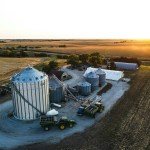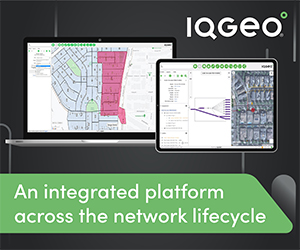Viewpoints
By: Steven S. Ross, Broadband Communities
More large apartment buildings are being built than ever before in the United States. Virtually all have fiber broadband installed. Great for deployers, venders, consultants and financiers. Here’s where, and why.
Buffeted by horrible weather nationwide, the highest interest rates in 20 years and chronic labor shortages, the residential construction industry is on course to set its third year of growth in units built. But the real story has been hidden in U.S. Census data.
For the past three years, growth in construction of new, multiple dwelling unit buildings (MDUs) has outpaced construction of single-family homes and far outpaced predictions. This year, we estimates said construction has or will start on about 20,000 large MDUs containing 520,000 dwelling units — 37 percent of all dwelling units for the year. That’s a slight decline from 2022, when 618,000 MDU apartments were 43 percent of all new housing construction starts.
The data does not include expansion or division of existing homes to add dwelling units (a solution pushed by many cities to help cure housing shortages and make communities more sustainable).
There is reason to believe that spurt (from 473,000 MDU starts in 2021) is sustainable. After all, a record high number of permits were issued in 2022 for 22,000 MDUs containing 617,000 dwelling units (on top of 47,000 units in smaller MDUs) but bad weather in much of 2023 may have pushed the spurt into 2024. As it is, the 520,000 units we predict for construction starts in 2023 is higher than our original projection of 500,000 made in October 2022.
This downloadable table, which we’ve named Table 1, details every residential housing permit for new construction issued in 2022. Units in large MDUs accounted for 40.3 percent of all new dwelling units permitted (42% in metropolitan statistical areas that have at least one MDU with five or more units). That’s up from 34 percent in 2021 (40% in metropolitan statistical areas that have at least one). All newly permitted single-family dwelling units were just 56% of newly permitted dwelling units, in a country where over 70 percent of the existing housing stock is in single-family homes.
Thus, it is obvious that builders and the financial community increasingly find it easier and more economically attractive to plan new MDUs than to build single-family homes from their older permit backlog of unbuilt structures. Obviously, the data points are muddled by a large number of “starts” delayed and restarted due to COVID-19 shutdowns and scarce labor or financing. And, obviously, despite much new MDU construction from backlogged permits in 2022, the permit backlog has been refilled.
It is all too obvious that the housing industry itself was too concerned about mortgage interest rate rises and availability of money, and did not predict explosive growth in alternative (mainly investor-based) financing.
Consensus predictions from the National Association of Realtors, Fannie Mae, and the Mortgage Bankers Association in late 2022 also predicted about 500,000 MDU dwelling units for 2023 (click here for a downloadable copy of last year’s version of this story).
The total number of dwelling units actually built has been above all our expectations, but the skewing toward MDUs was not.
Chart 1 shows the details and the trend.

Chart 2 shows the construction volume of new MDUs of all sizes by region.

Almost all – 95 t0 97 percent of new MDU construction – is for rental apartments. Bluntly, this changes the economics of the entire broadband industry. Per-unit, MDUs are by far the least expensive to provide with broadband in the first place, and to service. It is also far easier and faster to close deals with savvy building owners than with home-owner associations.
Typical costs to pass an apartment door with fiber are usually less than $1,500 and far less than $1,000 in new construction, if the building’s network is close to an existing fiber line (most are) or within range of good point-to-point wireless.
This allows builders and deployers to consider broadband even when projected full tenancy might take a year or more to achieve. The deployed network can be sold for prices approaching $2,000 per revenue-producing apartment these days, making financing easier. The peak was $4,000 for a short time a decade ago, but revenue potential as well as deployment costs have fallen. Overall spending on broadband services has grown or remained steady, but in this cord cutting world, deployers capture less of the revenue.
The downside for the economy as a whole and for families seeking housing, again, is that although the MDU sector of the industry is booming, far fewer single-family homes are being built — 1,126,000 in 2021, 810,000 in 2022, and a predicted 890,000 in 2023. This feature story is the latest in an annual sxheries appearing in Broadband Communities each fall, detailing trends and listing exactly where the new MDU construction permits are issued each year, in about 300 metropolitan-areas. Consultants, national financial firms, venders and deployers use it as a guide to target their own sales efforts. Now, with massive amounts of federal and state money helping to fund broadband deployments, state broadband officials should look as well.
Wall Street invasion
Higher mortgage interest rates have attracted some banks. But the major players in housing finance are now large “equity firms” on Wall Street and in other financial centers. As with the housing itself, these investors often have an eye specifically on broadband investment opportunities.
That, in turn, has fed the desire of all investors to examine the network “ownership” strength of deployers with regard to rights-of-way, peering points, and even relative immunity to being held up on pricing by a monopoly connection to worldwide networks.
Calculating the 2023 housing starts
The year ends on December 31, but readers generally need earlier estimates. By the time the December numbers are released by the Bureau of the Census at the end of January, much of the “selling season” has passed and building network designs are often frozen in favor of specific vendors and deployers.
In addition, financial markets are more active in December as the end of the tax year looms for individuals and most companies.
This year, we worked with the detailed U.S. Census data on building starts for the first nine months of 2023. We also looked at construction permits issued in 2023, but looked in much greater detail at permits issued in 2022 (Table 1).
The U.S. Census and the U.S. Department of Housing and Urban Development do not report on modifications to older buildings to create more apartments. In urban districts, and inner-ring suburbs, there has been a drift toward environmentally friendly subdivisions of older, larger dwellings into multiple smaller apartments. Reporting on conversion of outbuildings such as garages to
small stand-alone housing units is inconsistent nationally. Some jurisdictions treat such units as new construction. Some conversions are done without permits at all.
Small urban dwelling units carved out of large single-family homes are ideal for senior households, single occupants and young families. Most such buildings are already passed by fiber. In many jurisdictions, and the availability of work-at-home opportunities is likely to improve customer sign-up rates.
Current demographics, including a trend toward smaller families, are in line with desire for more density as an energy conservation and sustainability issue. Birth rates also have been down more than normal due to a population “echo” of a steep drop in the early 1970s. This produced fewer young families, fewer children, and fewer folks entering the workforce in the early 1990s and in the past decade. But birth rates are now beginning to rise again, which is driving household growth.
There are 40,000 communities in the U.S., but only 19,000 require formal construction permits. The U.S. Census inflates the numbers it collects by about 3 percent in its national reports to account for that. But the effect is far greater in high-growth states with abundant unincorporated land – Texas is a good example.
In many states, particularly west of the Mississippi River, significant developments are built outside city or town borders in these unincorporated areas and then folded into those communities once construction is finished. Therefore, although the number of units completed nationally tends to be about 7 percent below the number permitted, the number of dwelling units completed is sometimes higher than the national average in a given location.
MDU completions have grown at a higher rate than single-family subdivisions in the past few years – closer to a 3 or 4 percent drop from starts.
In the past few years rising interest rates, wind, rain, floods fire and heat waves making outdoor work difficult have all affected construction, and COVID-19 restricted indoor work, inside the shells of new buildings.
How the predictions are done
To estimate missing housing start data for October, November and December 2023, I do the
following:
- Calculate the absolute difference between each month’s housing starts from January to September.
- Because the differences (seasonally adjusted) were much greater on average for the first six months of 2023, we checked weather patterns, lost work days and interest rate increases by the Federal Reserve Bank for 2022 and 2023.
- This year, we used only the average of differences for July, August, and September to project housing starts in October, November and December 2023. Interest rate rises had moderated by summer.
- I repeated the approach for the four regions (Northeast, Midwest, South and West) into which U.S. Census divides the country’s data. The Northeast, for instance, had consistently milder weather than the rest of the country as well as lower construction volume, resulting in smaller corrections overall.
- Wages are generally higher in the Northeast and far West, so we ran the data two ways: ignoring and accounting for that. The differences were trivial – in part because MDU construction is far more common in metropolitan areas that already have fairly high wages no matter what the region.
- Interest rates are similar nationwide – they follow the federal discount rate. But historically, money is “tighter” (less available) in regions without money center banks such as the largest consumer banks and Federal Reserve branches. And, as noted, private equity firms (the entities that sometimes still call themselves “hedge funds”) are an ever-increasing part of the financial ecosystem. Blackrock is the largest.
- We look at the backlog of valid construction permits more than a year old, but no older than three years.
- Not all “residential” MDUs are for families. The category includes nursing homes, some hotels, assisted living, college dormitories and some hospitals and rehab centers. Predicting the flow of MDUs from permits to housing starts is also complicated by the way the U.S. Census reports the data. Building permit volume is not seasonally adjusted but housing starts are. MDU starts are not reported by region, but total housing starts and single-family housing starts are. Subtracting single family starts from total starts gives a good estimate for MDUs, which can be fine-tuned by considering estimated dwelling units in MDUs with only two to four units. The smaller MDU data is broken out in permit data (again, as in Table 1).
Financing
In past years, our adjustments have provided calculations within about 3% of what actually occurred – almost always being more pessimistic than reality. Last year, however, we were off by over 20 percent, predicting 500,000 new MDU starts for 2022 (bold because the previous year was 470,000 and because the “industry consensus” team was heading toward a lower figure).
We actually got 618,000. This year, the industry economists aren’t talking ahead of time. The causes of the miscalculation are fairly obvious. Rising mortgage interest rates had a lower effect than expected, especially for MDUs, because equity investor financing rose greatly for MDUs while stock prices generally fell in 2022 as bond prices and bank interest rates lagged inflation.
Local banks still provide half of the single-family financing (sending much of the risk on to Fannie Mae, despite increasing direct Wall Street participation). Smaller broadband deployers have been seeing a growing proportion of in-building broadband financed along with the structure itself, even when the deployers have a say in what the broadband infrastructure looks like.
Those factors have stopped swinging wildly, and indeed we see a small drop in the absolute number of dwelling units by the end of 2023 compared to 2022. But the proportion of new housing stock in MDUs seems destined to rise. Financing is easier for builders than for homeowners, especially since a large 2022 student loan forgiveness package was killed by the Supreme Court. The economy is growing nicely, COVID-19 seems under control, and we seem to be almost done with interest rate rises.
Rents are also falling, slightly, nationwide. That normally means fewer vacancies and thus more broadband customers. But, while the average drop is between 2 and 3 percent nationwide, there are also cities where rents are still rising. Boston’s was up 5 percent in September 2023, year-over-year.
Up and away
Last year’s permit volume set records. As Table 1 shows, permits were issued for 21,200 MDUs with five units or more, containing 616,681 units. Another 48,000 units are in newly permitted structures with 2 to 4 units. Historically, the U.S. Census has not consistently published summary building start data for smaller MDUs as they accounted for about 1 percent (and now 3 percent) of all new residential construction in communities that issue permits. But in 2022, they accounted for 7.6 percent of the permits.
The moral: Take heed. The residential market is changing, and the broadband industry is already changing as well, to meet the challenge.















